Part 1 of this article described interesting and useful books about:
- Film Cameras & Systems
- Digital Photography & Processes
- Photographic Arts & Techniques
This final installment offers some about:
- Famous Photographers’ Lives and Methods
- Photographic Tips, Tricks & DIY Equipment
Famous Photographers’ Lives and Methods
The two photographers who fascinate me most are Edward Steichen and Ansel Adams. Steichen, for the sheer variety and quality of his work. I think it was in the 1950’s that I saw his photo credit in a Life Magazine ad for Steinway pianos. And I’d never seen such a gorgeous black-and-white image.
Much later, I became fascinated with Ansel Adams after learning that he could have become either a concert pianist or photographer. My fascination deepened when one of my wife’s bosses told us about growing up near the Adams’s home in San Francisco… and once witnessing him feeding negatives and prints into a backyard bonfire. When asked why, he said he periodically weeded down to protect his legacy.
One wonders how many wonderful images went to the flames. AND whether Adams would have felt the need to similarly “cull the herd” if he lived in the era of Photoshop editing.
Anyway, on with the books:
Edward Steichen’s “A Life in Photography”
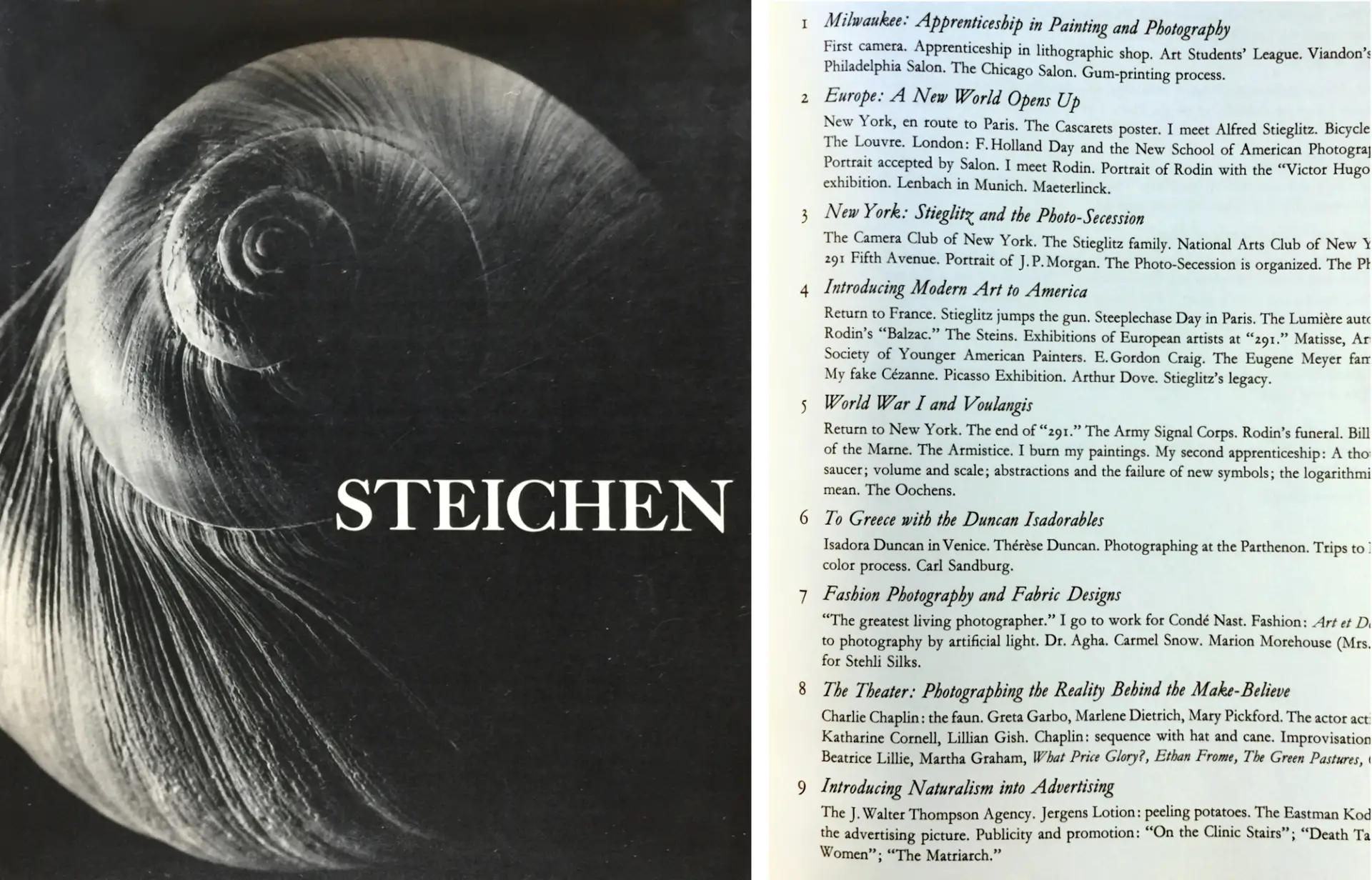 Written by one of the world’s most influential photographers, this coffee-table book is truly inspiring. Published in 1963 by the New York Museum of Modern Art, its big 11×12-inch pages are printed on quality paper with a very slight sheen. Its partial- and full-page reproductions are luscious. And peppered among the 249 black-and-whites are Steichen’s favorite memories… plus lots of name-dropping!
Written by one of the world’s most influential photographers, this coffee-table book is truly inspiring. Published in 1963 by the New York Museum of Modern Art, its big 11×12-inch pages are printed on quality paper with a very slight sheen. Its partial- and full-page reproductions are luscious. And peppered among the 249 black-and-whites are Steichen’s favorite memories… plus lots of name-dropping!
I knew his landscapes, city scenes, celebrity portraits, “Family of Man” images, macro shots and abstracts were beautiful. But I didn’t know how beautiful until I bought this book. And– oh my– at this writing, one can still snag the hardbound for $8.85 on Amazon!
Ansel Adams’ “Basic Photo Series”
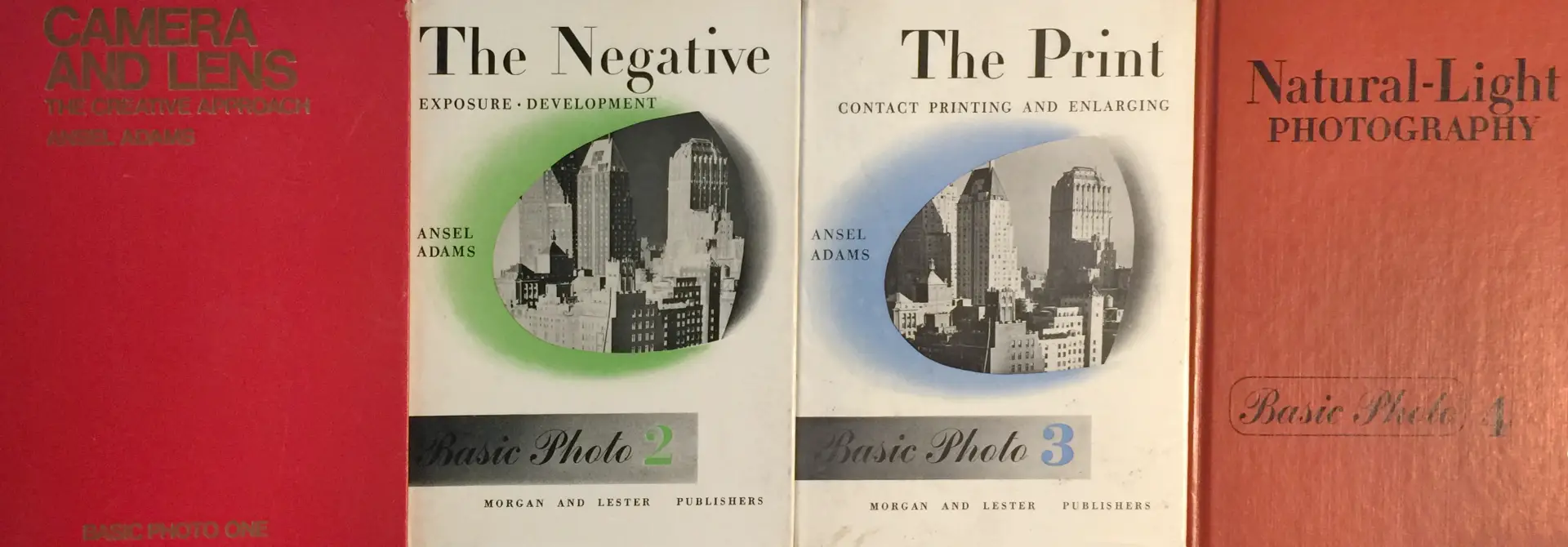 I’m not sure the word “Basic” in the title really applies. This famous series is technically dense. Adams wrote it to help people learn his “Zone System” for determining camera settings, film-development procedures and printing parameters to achieve a print’s “pre-visualized look.”
I’m not sure the word “Basic” in the title really applies. This famous series is technically dense. Adams wrote it to help people learn his “Zone System” for determining camera settings, film-development procedures and printing parameters to achieve a print’s “pre-visualized look.”
Over the years, I bought these books in thrift shops and used book stores so that I’d have them if I ever decided to try Zone. With today’s advanced digital cameras and image editors, I haven’t felt the need. But people still use the system today… especially with fully manual cameras like the ones Adams owned.
As of now, I’ve collected:
- “The Camera”
- “The Negative”
- “The Print”
- “Natural-Light Photography”
- “Camera and Lens: The Creative Approach”
I’m still missing (at least) “Artificial-Light Photography” and the “Polaroid Land Photography Manual.” But the books are beautifully illustrated… and highly recommended for learning to shoot the Adams way.
Mary Street Alinder’s Ansel Adams Books
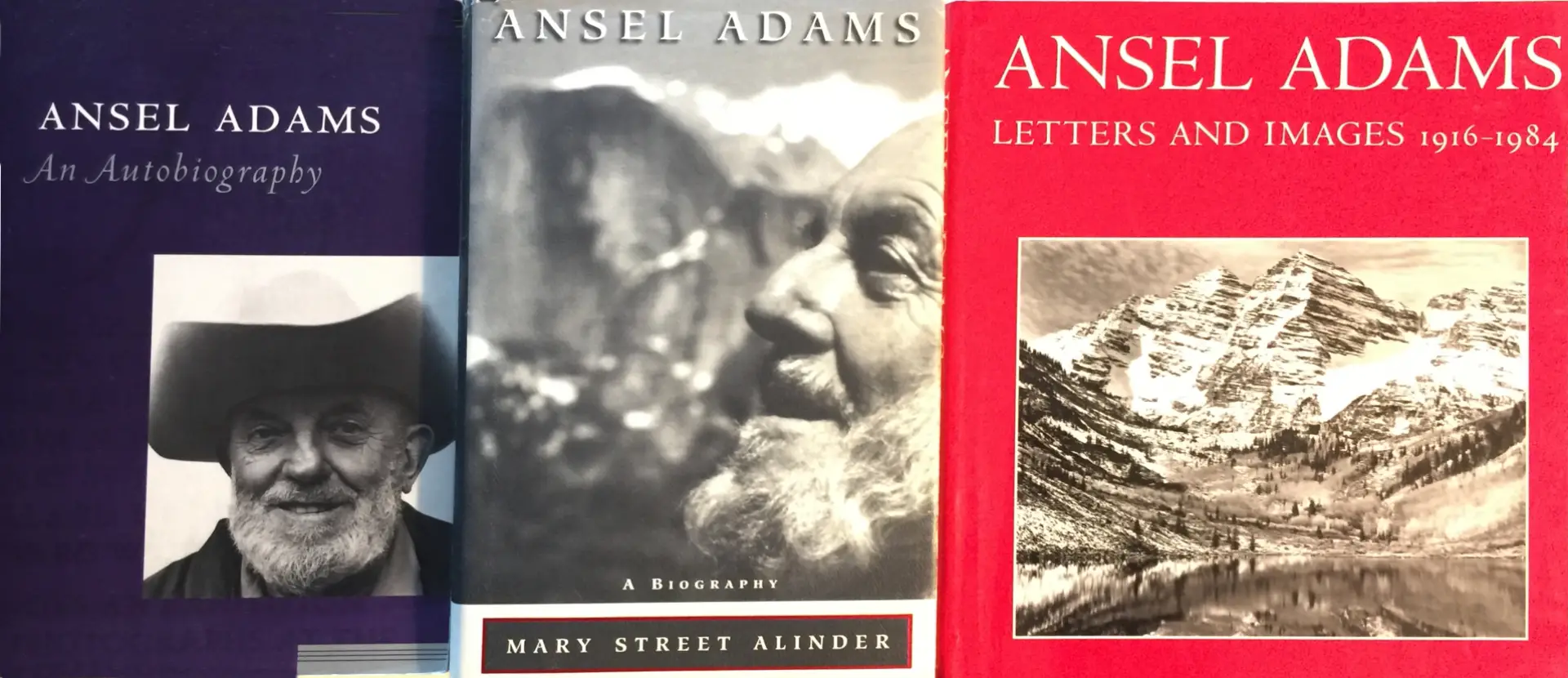 I haven’t seen even a minuscule fraction of the books written about Adams. But these three by Mary Street Alinder are must reads for anyone who wants to peer inside Ansel’s brain. From 1967 to Adams’ death in 1984, Alinder worked closely with him– becoming a friend, colleague and confidant. She also became an acknowledged expert on his photographs, printing processes and print-revision decisions later in life.
I haven’t seen even a minuscule fraction of the books written about Adams. But these three by Mary Street Alinder are must reads for anyone who wants to peer inside Ansel’s brain. From 1967 to Adams’ death in 1984, Alinder worked closely with him– becoming a friend, colleague and confidant. She also became an acknowledged expert on his photographs, printing processes and print-revision decisions later in life.
- “Ansel Adams: An Autobiography”– Adams himself worked on this document right up to his death. By then, Alinder had taken on the “formidable task” of completing, checking and publishing it. And shortly before his passing, Ansel penned this dedication to her: “To Mary Alinder, my dear friend and editor, whose devotion and love gave me the daily inspiration to continue writing this book, and whose editorial genius assembled it into a meaningful whole. She truly knows me better than I know myself.”
- “Ansel Adams: A Biography”– Printed later, this volume covers more personal ground than the autobiography. One finds insights into Adams’ life, daily routines, difficulties, triumphs and philosophies.
- “Ansel Adams: Letters and Images 1916-1984”– Illustrated with 125 of Ansel’s black-and-white landscapes and family snaps, this 400-page compilation of letters to Alinder and others offers perhaps the most personal insights of the three books. You can witness Ansel’s immense sense of humor first-hand… even learning that he sometimes (and fittingly) signed his letters “Beard.” Also researching and co-editing this massive collection was Andrea Gray Stillman, another long-time Adams collaborator, researcher and editor of Adams books and documentary films. A powerhouse team for a massive project!
A George Eastman House Compendium
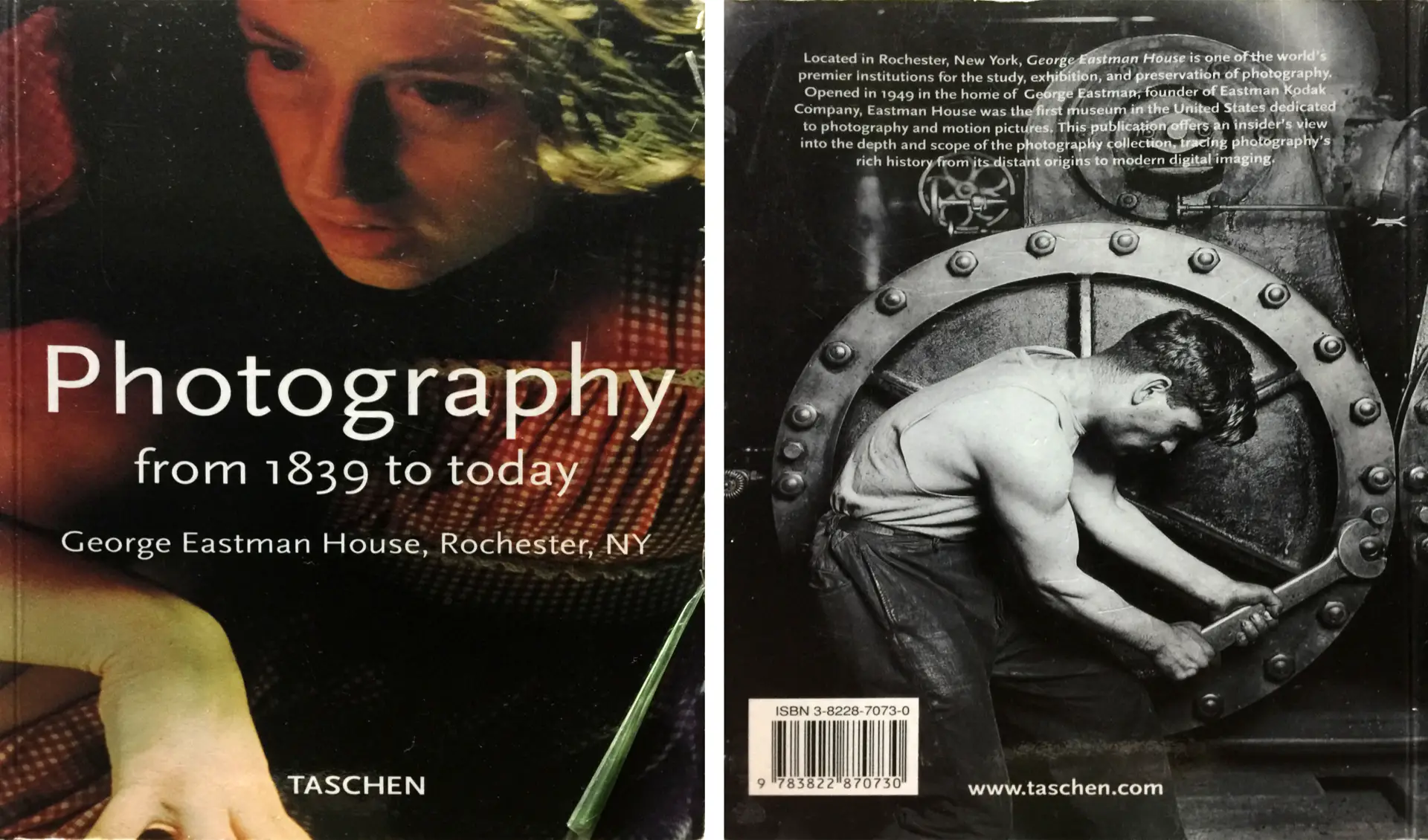 While the earlier books are about specific photographers, this thick (766-page) compendium (published by Tashen) is about (by my rough estimate) the work of more than 350 photographers between 1839 and my volume’s 2000 publishing date. Updated versions continue to be released under the slightly different title “A History of Photography from 1839 to the Present.”
While the earlier books are about specific photographers, this thick (766-page) compendium (published by Tashen) is about (by my rough estimate) the work of more than 350 photographers between 1839 and my volume’s 2000 publishing date. Updated versions continue to be released under the slightly different title “A History of Photography from 1839 to the Present.”
Since 1949, the Rochester, New York home of Kodak founder George Eastman has been a world-leading museum of photography and film. This chronological history profiles the photographers, and more than 700 of their their most impressive images (from the museum’s collection of thousands). Yes, many famous shooters are here. But you’ll also find a Lewis Carroll albumen print of a young girl. And the text offers nicely concise biographies.
Just leafing through the volume is a great way to witness photography’s changes over the centuries. Taschen sells the current book for $25. But older versions like mine are also online. It’s a great browse too.
Photographic Tips, Tricks & DIY Equipment
The next books are treasure troves! With two exceptions, they’re older texts unearthed in used book stores, thrift shops and library sales. And while all were written for film photographers, much of their content can be applied to digital projects too. (They’re also great volumes to aimlessly thumb through late at night.)
Popular Science’s “How to Make Your Own Photographic Equipment”
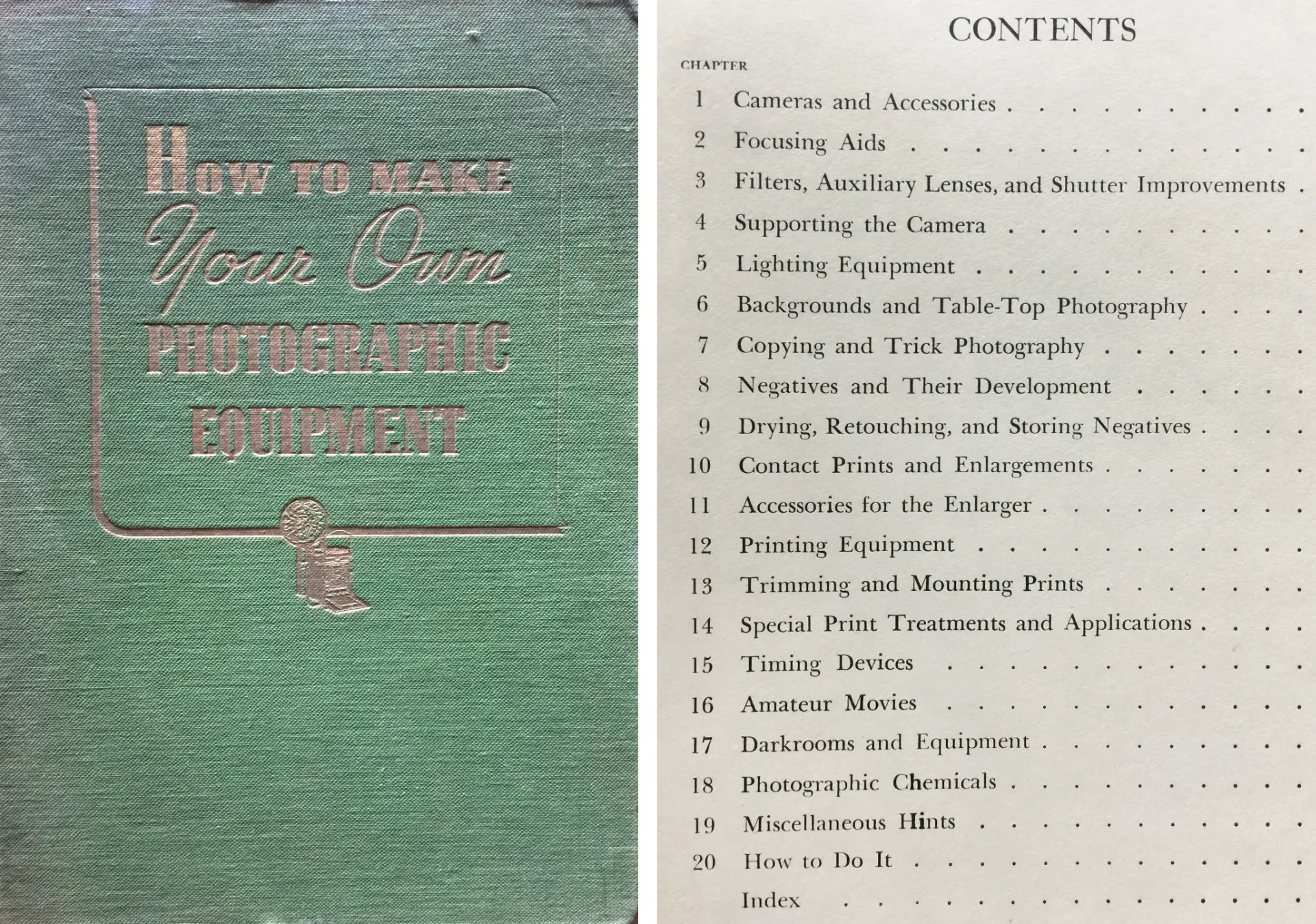
Popular Science magazine has been around a while. This 1941 anthology of its photo articles was targeted to both still and movie photographers. But the content remains fascinating and useful for digital shooters.
For example, the very first article is about making bellows for cameras and enlargers. And the last– most advanced– chapter is about working with camera-project materials including: brass, aluminum, bronze, “monel metal,” wood, sheet metal, glass, plastic, screws and bolts, machine tools, quick-drying cements, wood, bake-on enamel, non-baked art finishes, lacquers, non-reflecting finishes, and (of course) electricity.
In between, are an eye-popping variety of projects that I can’t fully characterize. Leafing through, I learned how to literally bind slides into “micro books,” make cut-film developing racks out of 16-gauge wire, and even build different types of enlargers. I may have to try some of these for 35mmc!
National Camera’s “Photo Technology Data Book”
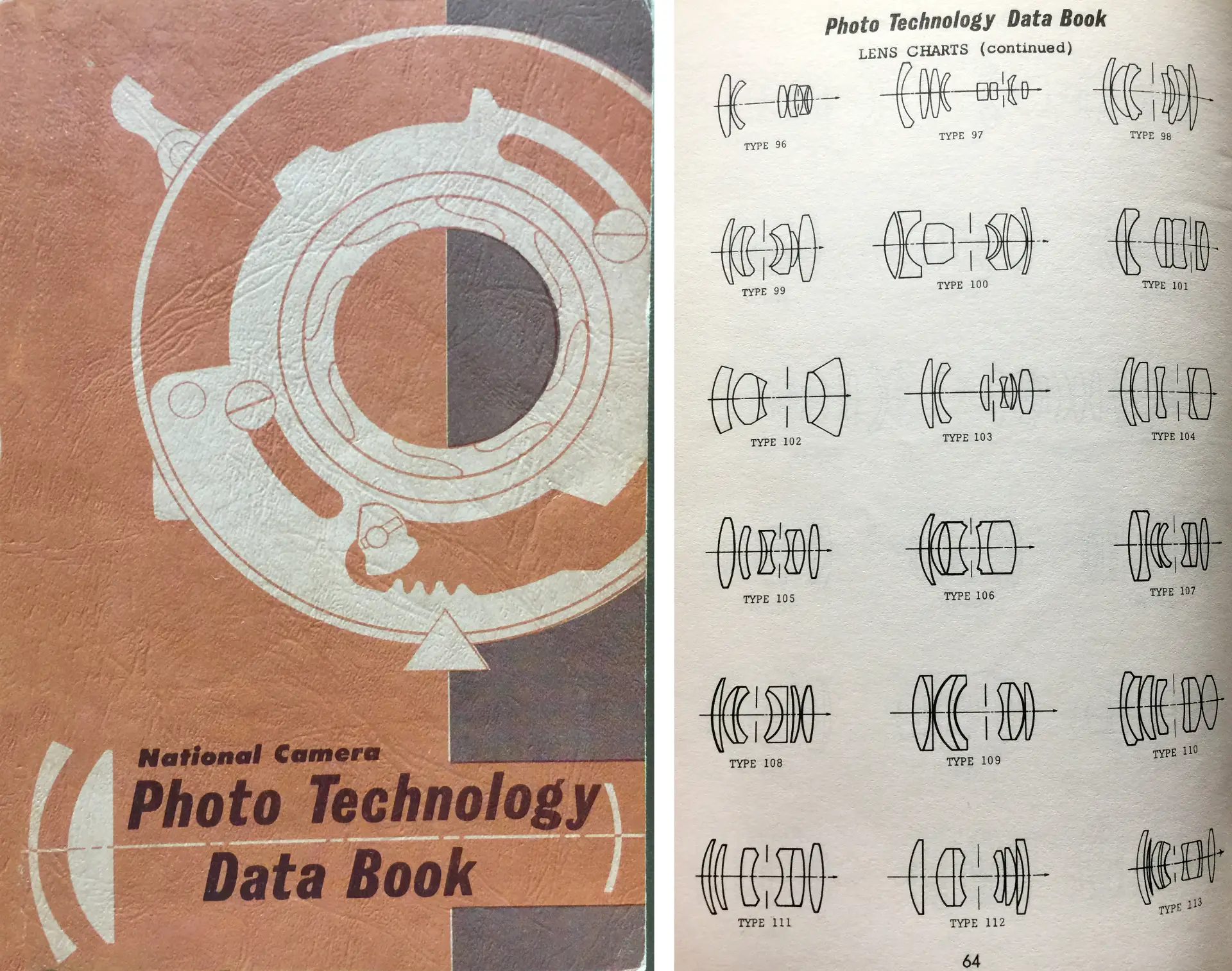 Formerly titled the “Camera Repairman’s Handbook,” my 1970 edition’s tables of photography standards and lens-design schematics proved very useful for experiments like this one. The rest of its contents are too varied to even list, but here’s a decent overview and purchasing page.
Formerly titled the “Camera Repairman’s Handbook,” my 1970 edition’s tables of photography standards and lens-design schematics proved very useful for experiments like this one. The rest of its contents are too varied to even list, but here’s a decent overview and purchasing page.
Kodak Reference Materials
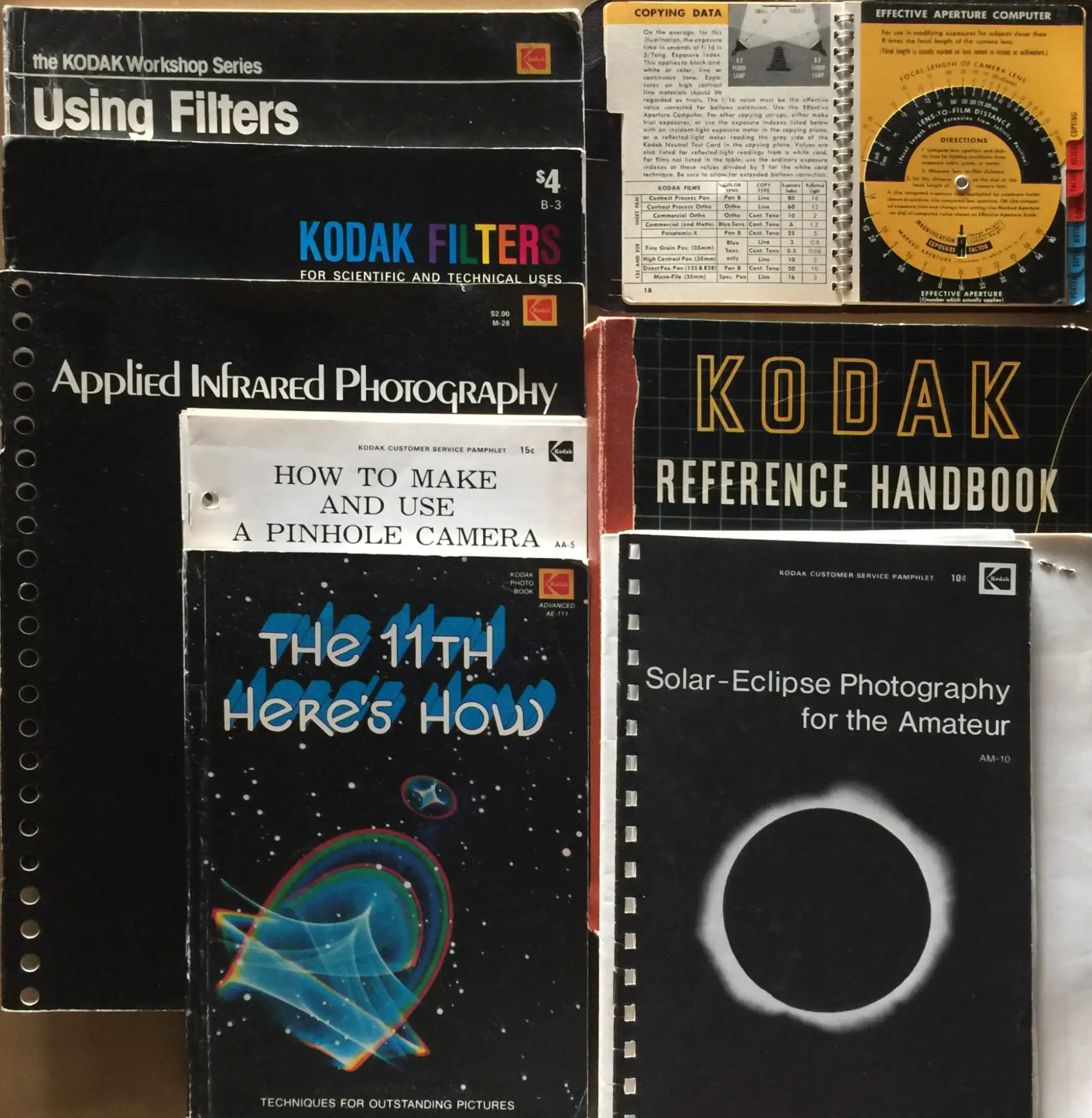 I didn’t buy most of these, but inherited them from my father. It’s sad that his increasingly severe OCD kept him from ever using the cameras he bought later in life… including a Nikon FE system that I inherited in unused condition.
I didn’t buy most of these, but inherited them from my father. It’s sad that his increasingly severe OCD kept him from ever using the cameras he bought later in life… including a Nikon FE system that I inherited in unused condition.
And as a scientist, he collected a lot of Kodak reference materials. They’re all worth hunting down in used book stores and the boxes of loose ephemera that one finds in thrift/antique shops. But the little 1951 “Master Photoguide” (shown open at the upper-right of the photo) is especially cool… with built-in paperboard “computer” disks for determining:
- Daylight film exposures
- Flood-light film exposures
- Flash exposures
- Effective apertures (shown above) and
- Depths-of-field
One of its pages also has built-in Wratten A, B, C-5 and G gel filters– for previewing glass filters’ effects on outdoor subjects! These were more for people using rangefinder and folding cameras than SLRs (whose viewfinders let you review the effects of real glass filters). But even today, this little shirt-pocket book can be appreciated for its informative mechanical marvelousness!
NOTE: Kodak also published a larger ring-bound version (immediately below the little “Master Photoguide” in the above photo). This book could be enhanced with hole-punched technical booklets (like the ones in the photo about solar-eclipse photography and making pinhole cameras). But it doesn’t include the cool paperboard “computer” disks!
Ziff Davis’s “Little Technical Library”
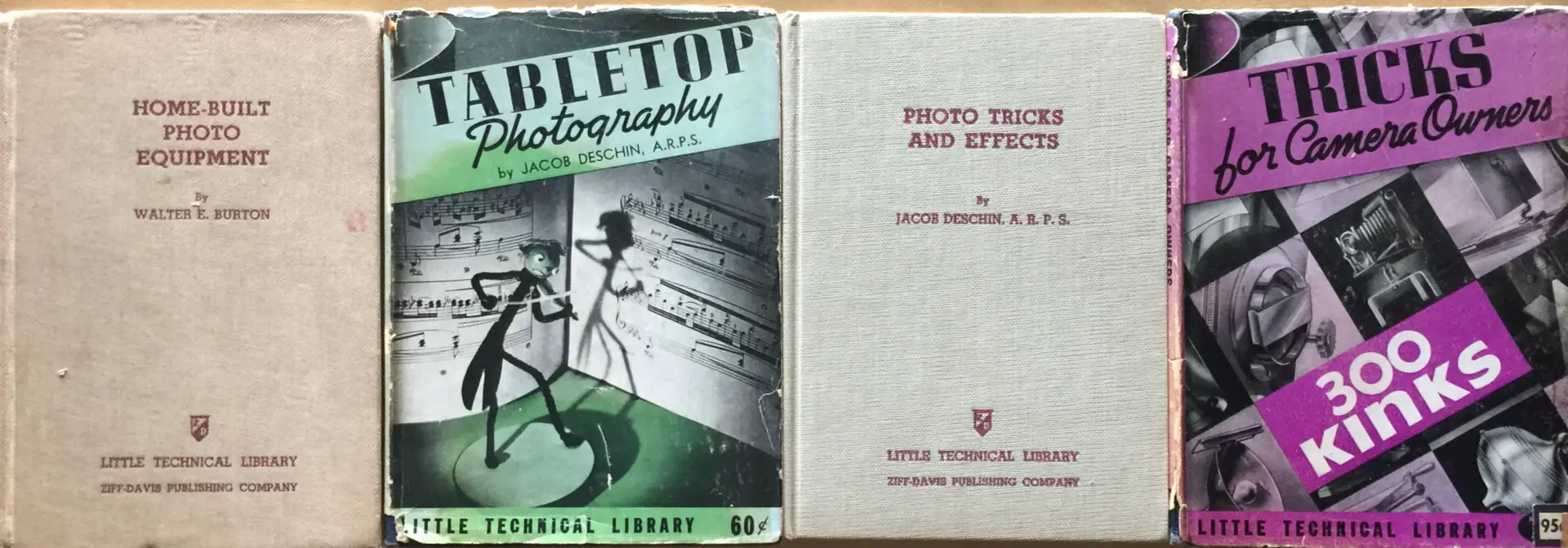 These 5×7-inch hardbound books (sold by Ziff-Davis in the 1930s and ‘40s) are just plain FUN! I don’t know how many they published, but I’ve seen lists of thirty… and there were probably more. When first released, they cost just $.50, and were info-dense bargains. For example, “Tricks for Camera Owners” (far right) packs 300 “kinks” (tips, tricks and ideas) into its 150 diminutive pages.
These 5×7-inch hardbound books (sold by Ziff-Davis in the 1930s and ‘40s) are just plain FUN! I don’t know how many they published, but I’ve seen lists of thirty… and there were probably more. When first released, they cost just $.50, and were info-dense bargains. For example, “Tricks for Camera Owners” (far right) packs 300 “kinks” (tips, tricks and ideas) into its 150 diminutive pages.
I continue to keep my eyes open for these titles. And like Popular Science’s big book (earlier), they offer great late-night browsing!
The Caffenol Cookbook
That completes my small book collection (as of now). But a great free PDF resource for today’s DIY film developers is the official “Caffenol Cookbook & Bible.” It’s a must for anyone who’s interested in developing film with an eco-friendly concoction of coffee, vitamin-C, soda ash and table salt. The web offers many additional Caffenol recipes (and instructional videos), but this PDF is a great place to start.
If this article (and Part 1) proved interesting and useful, happy hunting! And if you you have any favorite references, please share them in a comment!!
–Dave Powell is a Westford, Mass., writer and avid amateur photographer.
Share this post:
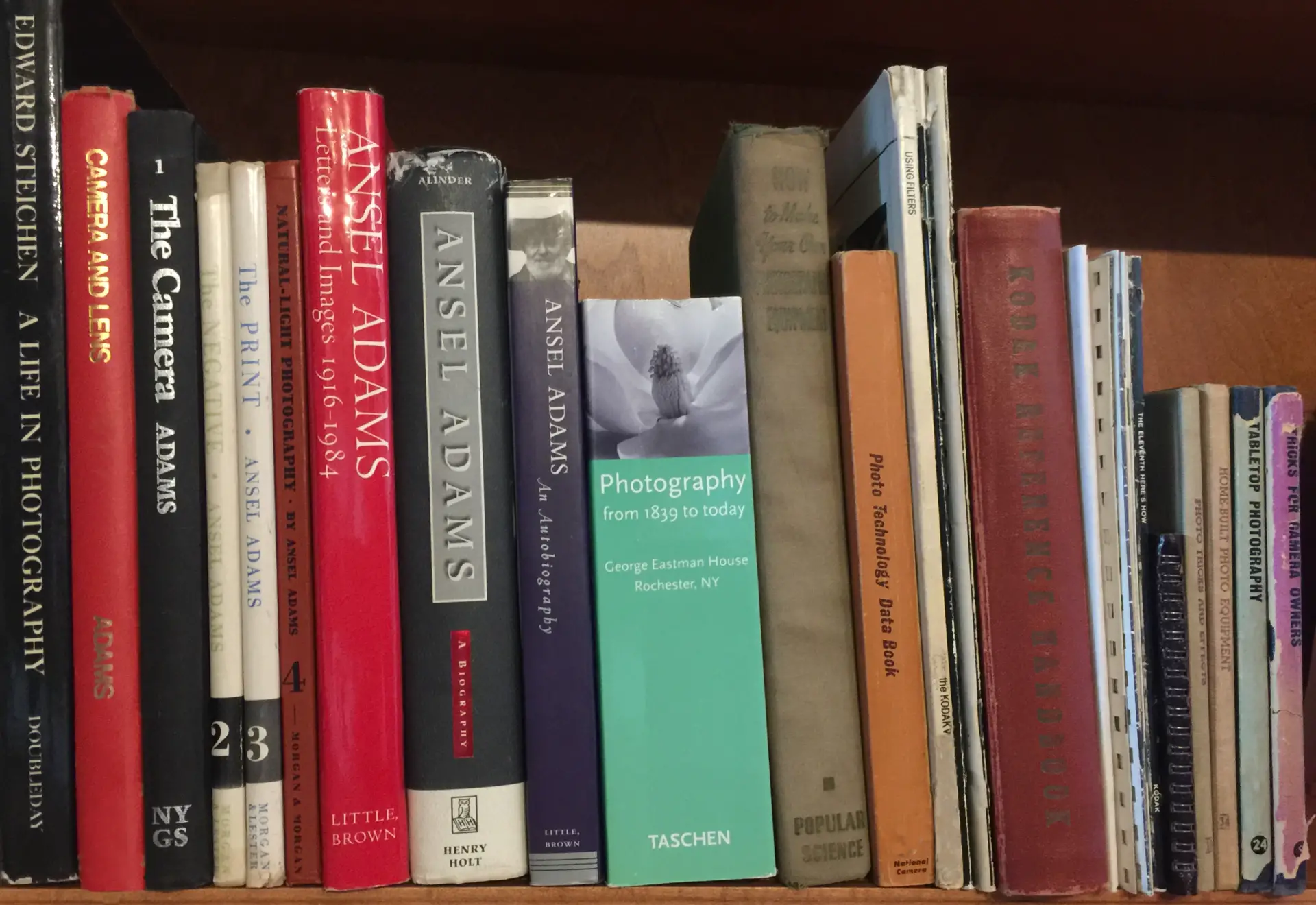
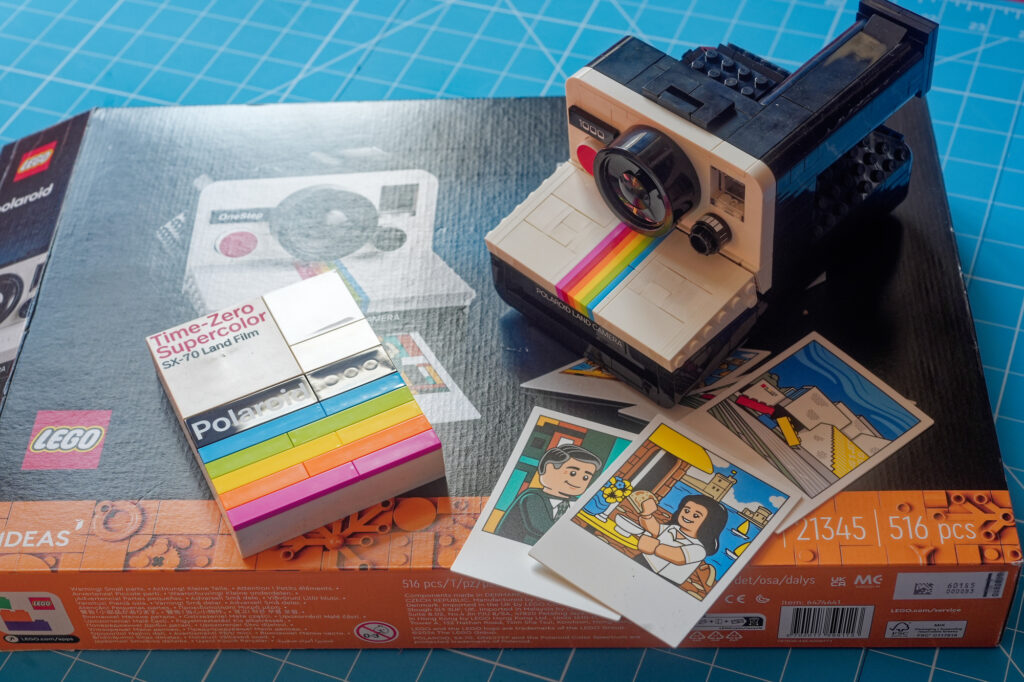
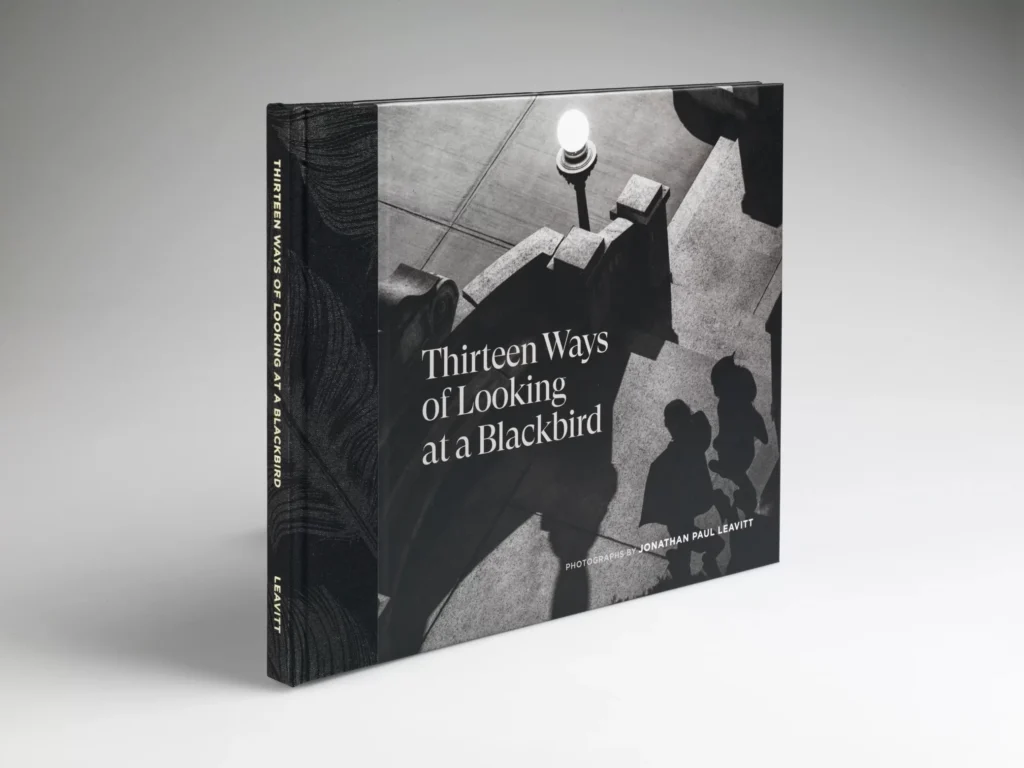
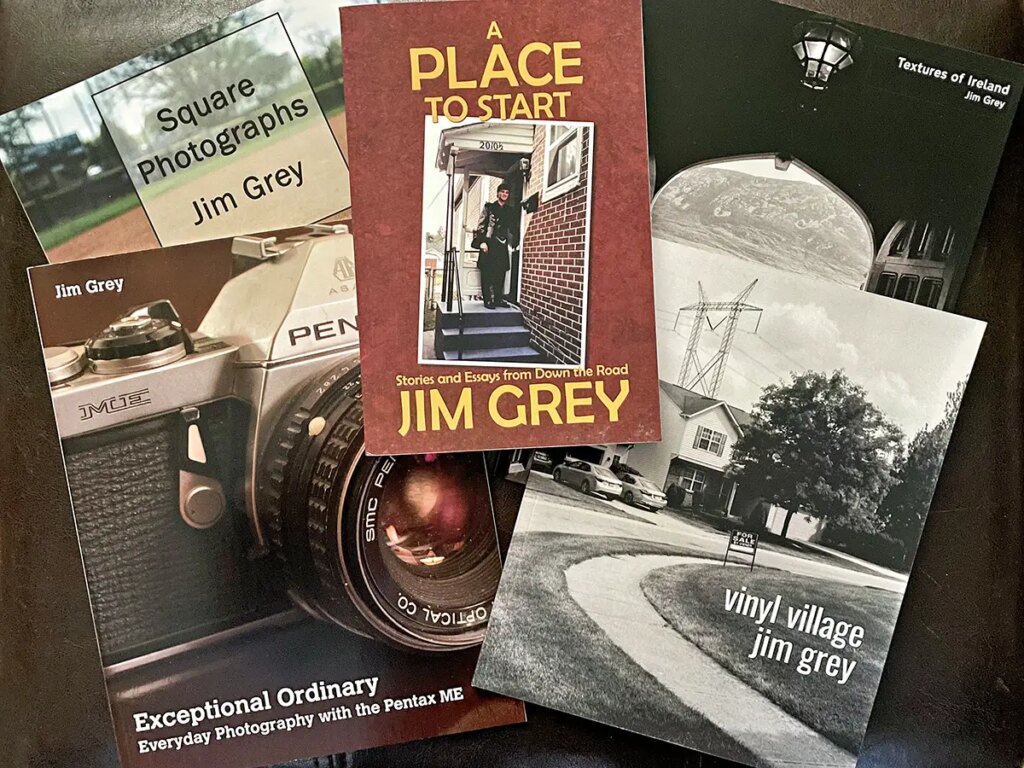





Comments
Murray Leshner on Some Cool Books for 35mmc Readers (Part 2)
Comment posted: 21/12/2023
Just ordered a used copy of the Steichen: A Life in Photography book. Odd how many places sell the hardbound one for a fraction of the paperback.
Thanks
Comment posted: 21/12/2023
Gus on Some Cool Books for 35mmc Readers (Part 2)
Comment posted: 21/12/2023
We are very fortunate to have a library with an incredible collection of photography books. My strategy recently has been to try books out (by borrowing them), and I find them particularly useful or inspiring to buy them.
Recent favorites have been:
- Modern Architecture; Photographs by Ezra Stoller (includes his notes about working with the various architects and process behind the photos)
- Mountain Light: In Search of the Dynamic Landscape by Galen A. Rowell (arranged in sections with preamble about process, technique, and adventure!)
Comment posted: 21/12/2023
Peter Roberts on Some Cool Books for 35mmc Readers (Part 2)
Comment posted: 21/12/2023
An interesting little book I found recently was 'Photographing the Fallen' which ties in with my interest in military history. Drawn from the archives of one Ivan Bawtree it records his work and experiences as a photographer with the Graves Registration Unit on the Western Front 1915-1919. It's not the usual war photographer stuff.
There is perhaps a Part 3 to be written: fiction that has a photographer and/or photography as part of the plot. Three that spring to mind (in descending order of photographic prominence) are:
1/ Picture Palace by Paul Theroux
2/ Tennyson's Gift by Lynne Truss
3/ Ruby in the Smoke by Philip Pulman
They might be just the thing for dark winter evenings.
Comment posted: 21/12/2023
Comment posted: 21/12/2023
Comment posted: 21/12/2023
Comment posted: 21/12/2023
Comment posted: 21/12/2023
Comment posted: 21/12/2023
David Dutchison on Some Cool Books for 35mmc Readers (Part 2)
Comment posted: 21/12/2023
Comment posted: 21/12/2023
Basil Steinle on Some Cool Books for 35mmc Readers (Part 2)
Comment posted: 22/12/2023
Comment posted: 22/12/2023